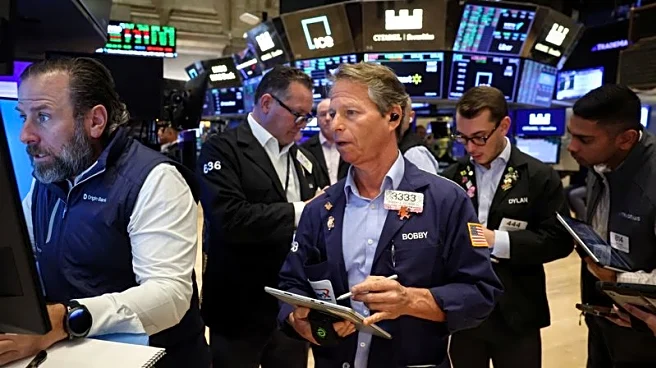What's Happening?
US stocks experienced a decline as investors grappled with uncertainty regarding potential interest rate cuts by the Federal Reserve and concerns over high valuations in the technology sector. Despite
a strong earnings season, these factors overshadowed market optimism, leading to a dip in major indices. Qualcomm Inc., a leading semiconductor firm, reported positive earnings but saw its shares fall due to investor caution. The S&P 500 and Nasdaq 100 futures showed little change, reflecting the cautious sentiment among traders.
Why It's Important?
The decline in US stocks underscores the impact of macroeconomic factors and investor sentiment on market performance. Concerns about interest rate policies and tech valuations can lead to volatility, affecting investment strategies and economic forecasts. The cautious approach by investors may influence corporate decision-making, particularly in the tech sector, where high valuations are under scrutiny. This situation highlights the interconnectedness of economic policy and market dynamics, with potential implications for future growth and stability.
What's Next?
Market participants will closely monitor upcoming Federal Reserve announcements for clarity on interest rate policies. Any indication of rate cuts or hikes could significantly influence market sentiment and trading strategies. Companies in the tech sector may reassess their valuations and growth projections in response to investor concerns. Additionally, ongoing earnings reports will provide further insights into corporate performance and economic conditions, potentially influencing market trends and investment decisions.
Beyond the Headlines
The current market dynamics reflect broader economic challenges, including inflationary pressures and global economic uncertainties. These factors may lead to increased scrutiny of corporate governance and financial transparency, particularly in sectors with high valuations. The situation also highlights the importance of adaptive investment strategies that can navigate economic fluctuations and regulatory changes.













